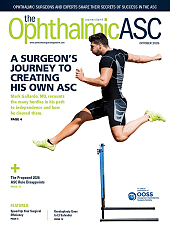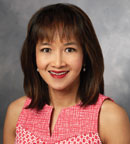Thankful. Grateful. Appreciative. These familiar words help us express gratitude to others—especially during this month of November, as we prepare to celebrate Thanksgiving. Each day, no matter how busy or chaotic my schedule may be, I genuinely find enjoyment and fulfillment in my work as a retina specialist.
Last month at the American Academy of Ophthalmology’s annual meeting in Orlando, Florida, I had the opportunity to reconnect with many friends and colleagues from around the globe. I was thrilled to reunite with my former co-residents and mentors from the Wilmer Eye Institute. We reminisced about our adventures in residency, fellowship, and early careers, shared wonderful memories, and reflected on how far we have come both professionally and personally. Everyone I spoke with expressed gratitude for choosing ophthalmology and the subspecialty of retina, and I couldn’t agree more.
As I read the articles in this edition of Retinal Physician, I am deeply appreciative of the knowledge shared by so many leaders in our field. Dr. Thomas Ciulla offers valuable insights on best practices for clinical research site collaboration and guidance for physicians seeking to be responsible and successful clinical trial investigators. Dr. Patricio Schlottmann describes how the retina community in Argentina has built an outstanding clinical trials infrastructure, leading to strong enrollment in many studies. Their collaboration has fostered innovation, research growth, and more therapeutic options for patients. Dr. Priya Vakharia reviews tyrosine kinase inhibitors currently under investigation for neovascular age-related macular degeneration (AMD) and diabetic macular edema, discussing their potential advantages and mechanisms that may help ease the treatment burden associated with current anti-VEGF therapies.
I am also grateful to Drs. Scott McClintic, Jacob Grodsky, and Geoffrey Emerson for their thoughtful article exploring the environmental impact of fluorinated gases in retinal surgery—a topic I had not previously considered. In addition, Dr. Jonathan Lin offers advice to young doctors on how to evaluate whether a retina fellowship is the right fit, and Elizabeth Cifers shares her expertise in coding and billing, an important area where we can all continue to learn and improve. Finally, in an article on our website, Kevin J. Corcoran provides an informative overview of coding, billing, and reimbursement for photobiomodulation for intermediate dry AMD.
All of our contributors make each issue educational and insightful. I am continually impressed by their hard work and generosity. Thank you for taking the time to read Retinal Physician—I am truly grateful for your partnership. RP









